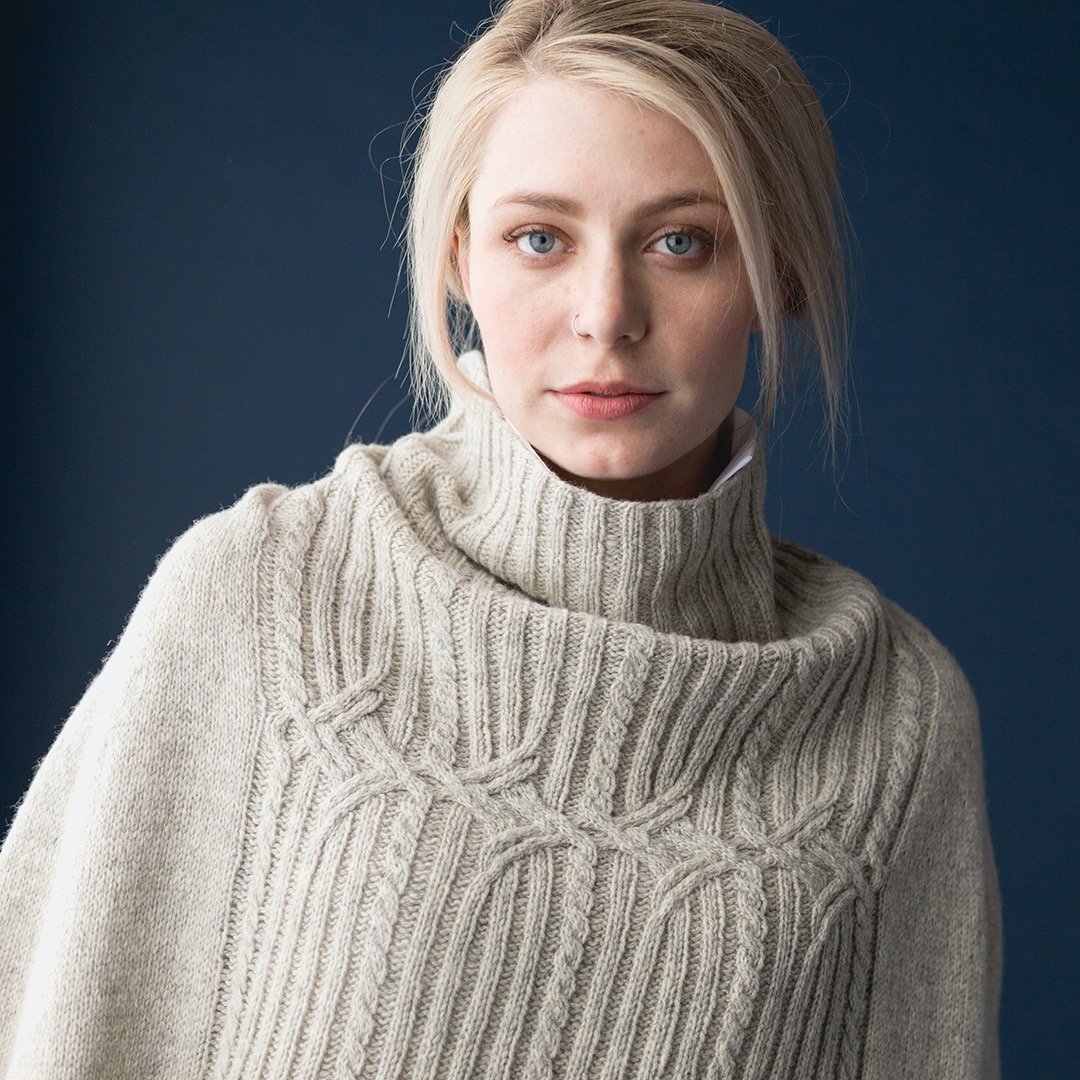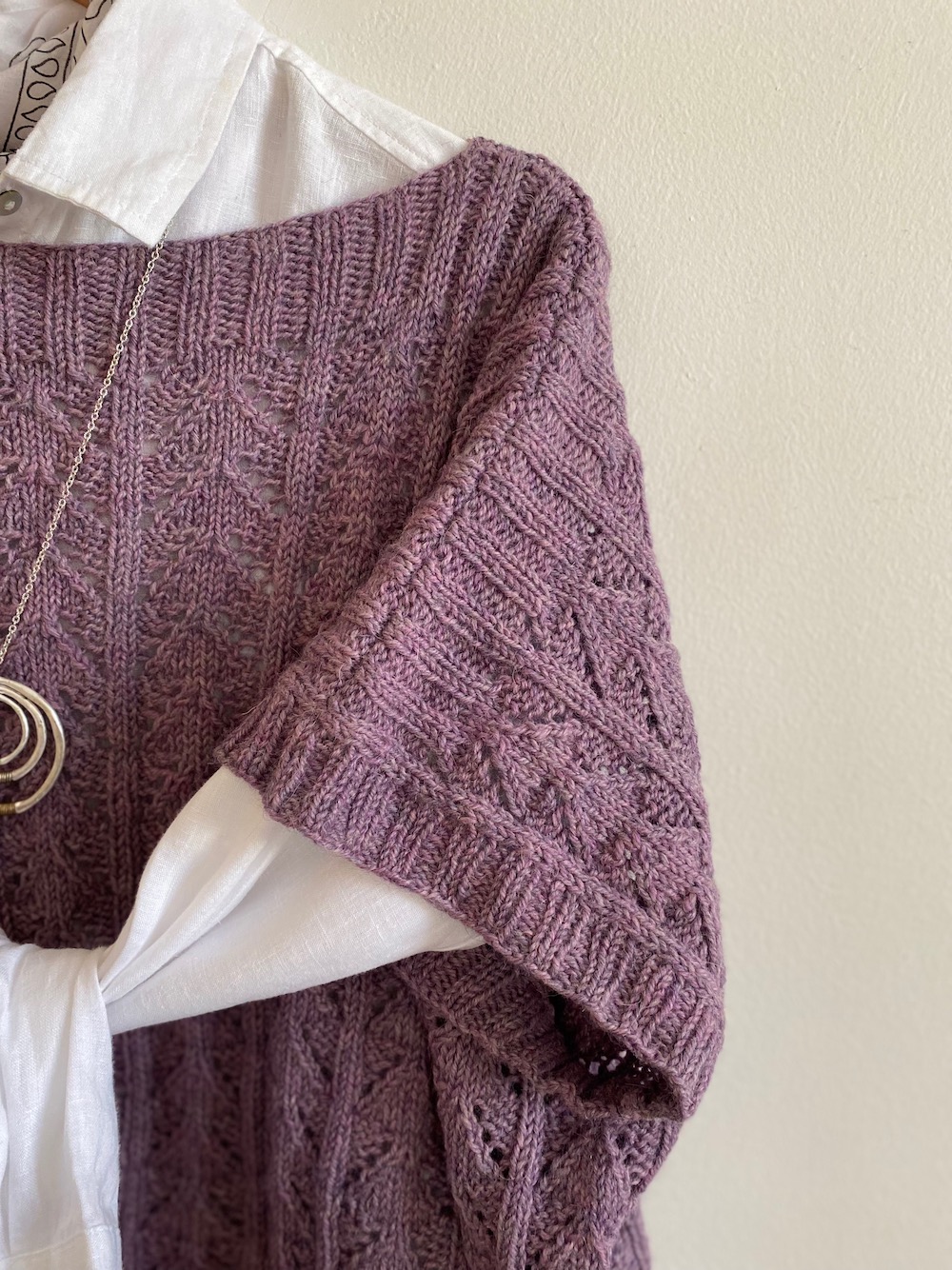It’s that time of year again! I love summer knitting and I love the transition from winter to summer fibers. Suddenly, my world is filled with cotton, linen and hemp in pretty spring colors and summer neutrals. I’ve got some Hempathy by Elsebeth Lavold for a tote bag, some Bio-Sesia from Italy for a pretty little tank top and some Good Earth by Fibra Natura for a slouchy brimmed hat.

I have a couple of new releases due out in June, one of which has been a pet project of mine for a few years. The Maizie Pullover has taken on several incarnations and is being sample knit as we speak for release June 28. Tipsy Knitter Dana M. has been hard at work knitting Maizie in Quince and Co. Sparrow. The brand new Maizie will be released in the Pigeon colorway. Sparrow is my hands-down favorite linen. It has a suppleness not found in other linens, yet retains the characteristic “bounce” that I love so much about linen yarn.

Recently, Creative Knitting Magazine featured my Lanai Tee pattern, which is also worked in Sparrow. Lanai is a simple column of linen with a slightly draped neckline and a pretty leafy stitch pattern. The pattern is available HERE.
Any idea how linen yarns for knitting and weaving are made? I was amazed at how labor intensive it is to extract the silky fibre. Linen is a bast fibre, which means the long, sinewy strands are wrapped around a sort of straw and encased in a stalk. Linen fibre comes from the area labelled ‘BF’ below.

Once the plants, whose carefully broadcast seeds are neither too close nor too far apart, have reached maturity, the entire plant is uprooted, bundled and placed to dry in the sun. Once dry, they are threshed to remove the seeds. Next, the retting, or ‘rotting’ process takes place during which the dry, outer stalk is removed by soaking in open baths or rotting in dew in the fields. Either way, I gather it’s a pretty stinky proposition. The softened stalks are then dried and cured before they are broken and scutching knives are employed to remove remaining woody bits.
The silky fibre is then combed or heckled using a bed of nails which separates the fibers into long strands that can be spun. Can you imagine? Who was the first guy to say, “Um, yeah, I bet there’s some cool stuff inside that plant stalk…think I’ll work my butt off to get it outa there!” Thank goodness he did. I’ll sure never complain again about the cost!






















Jodi
Fun post, Cheryl. I just finished a test knit using Hempathy. Really nice yarn. It’s too bad it’s discontinued.
Little Church Knits
Ugh. So sad. I love it so!
littleblackdogsa
🙂 I also thought it was a knitted piece.
Lovely to see all the summer fibres. They knit so well during the warmer days. Enjoy all the new ideas. You inspire us all to create lovely things too.
Little Church Knits
Thanks, nice lady!
Jen
The picture of the cross section of the linen stalk looks like it was knit! I saw it quickly with out reading and thought it must be a new type of shawl pattern another pi shawl. Great picture and thanks for giving all this information. I never knew it was so labor intensive.
Little Church Knits
Wow! I never thought of it but, yes! It really does look knitted!